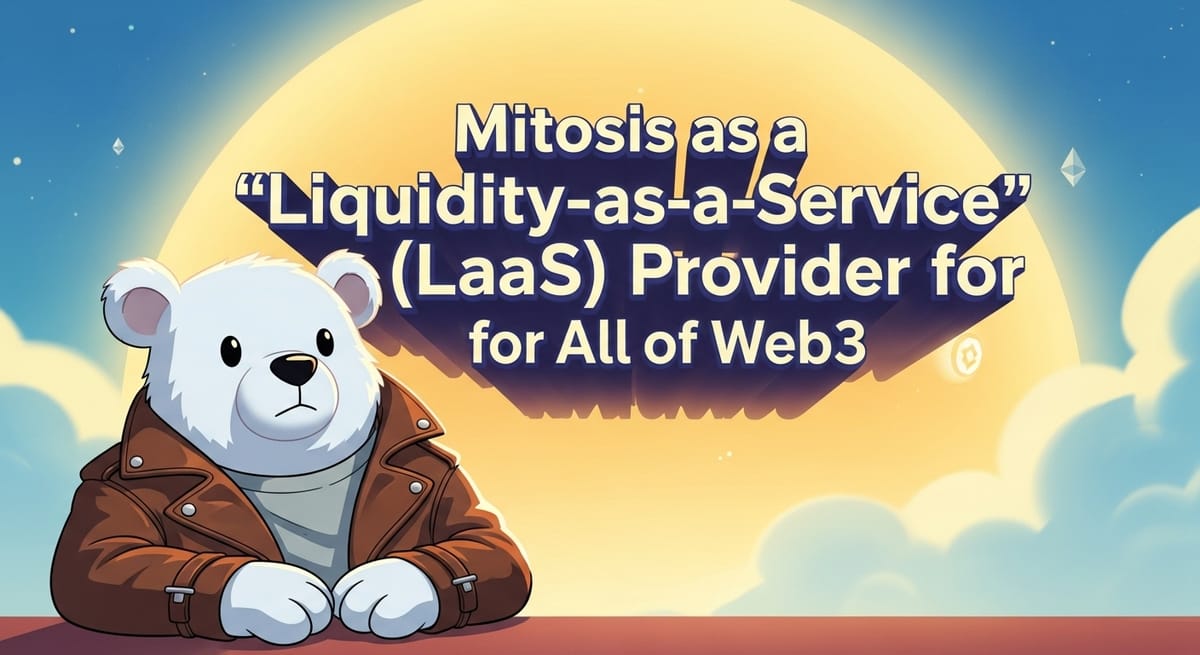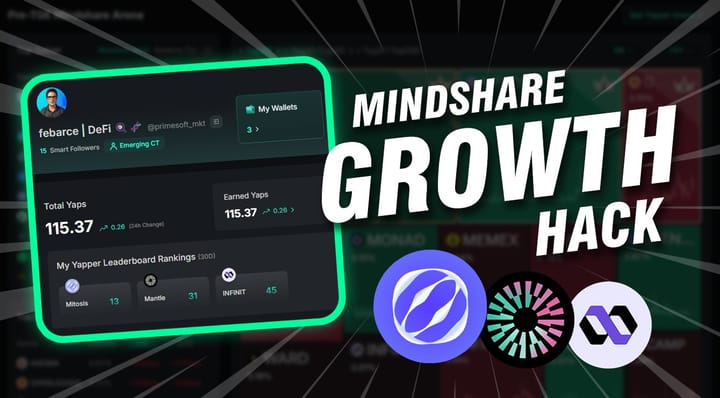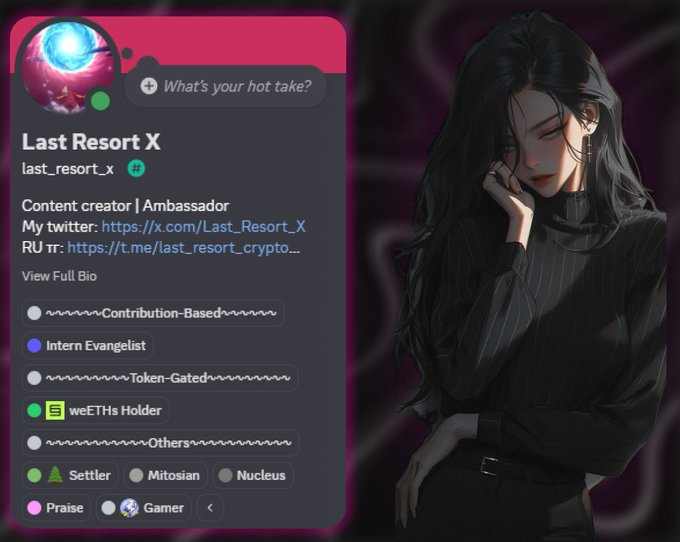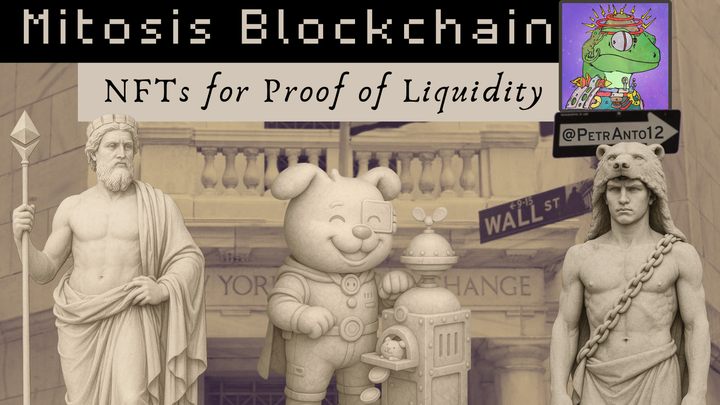Beyond the Bridge: Mitosis as a "Liquidity-as-a-Service" (LaaS) Provider for All of Web3

1. Introduction: A New Need in the Multichain Era – Liquidity on Demand
As the Web3 space matures and expands, we are witnessing a shift from monolithic blockchains to complex, multi-layered ecosystems. Dozens of new Layer 2 solutions, specialized appchains, and modular blockchains are emerging. Each aims to offer better speed, lower fees, or unique features for its users and developers.
However, this explosive growth has given rise to a new, fundamental problem – the "cold start" problem and liquidity fragmentation. For any new blockchain or DeFi protocol, attracting initial liquidity is a matter of survival. Without liquidity, decentralized exchanges don't work, lending protocols are useless, and users cannot effectively trade or utilize their assets.
Traditional methods of attracting liquidity, such as inflationary "yield farming" programs, often prove to be short-term and unsustainable. Capital arrives for high yields and leaves as soon as they dry up. This creates a need for a new class of infrastructure solutions – "Liquidity-as-a-Service" (LaaS).
What is "Liquidity-as-a-Service" (LaaS)?
LaaS is a business model where a protocol or service provides liquidity on demand to other projects, networks, or applications, helping them solve their challenges. Instead of each project trying to attract and retain liquidity on its own, it can "rent" it from a specialized provider.
Key problems that LaaS solves:
- Solving the "cold start" problem for new networks and protocols.
- Providing liquidity for cross-chain bridges and other applications.
- Maintaining market depth on decentralized exchanges.
- Supplying capital for lending markets to function.
In the Web3 economy, liquidity is the "oil," and LaaS providers are becoming those who build the "pipelines" and manage the "reservoirs," ensuring a continuous supply.
Mitosis: From Protocol to LaaS Provider
Initially, Mitosis can be viewed as a protocol that solves the problem of cross-chain transfers for end-users. However, its fundamental architecture, especially the Ecosystem-Owned Liquidity (EOL) model, perfectly positions it to become one of the leading "Liquidity-as-a-Service" providers in Web3.
Unlike traditional bridges, which are often passive channels, Mitosis, by owning and actively managing its own liquidity treasury (EOL), can act as an active economic agent. It doesn't just allow assets to be moved – it can direct, provide, and "seed" liquidity where it is needed most.
This changes the paradigm: Mitosis is not just a product (B2C), it is a platform and service for other protocols and networks (B2B/P2P).
What Will You Learn From This Article?
In this article, we will take a detailed look at the Mitosis business model as a "Liquidity-as-a-Service" provider:
- Who are the main "clients" for LaaS from Mitosis?
- What specific "products" or "services" based on EOL can Mitosis offer?
- How does this business model contribute to the growth of Mitosis itself and its treasury?
- What strategic advantages does Mitosis have over other potential LaaS providers?
We will show that Mitosis is something more than just a bridge. It is a well-thought-out economic system capable of becoming a fundamental infrastructure partner for hundreds of projects in the multichain universe.
2. Clients and Products: How the Mitosis LaaS Model Works
Viewing Mitosis as a "Liquidity-as-a-Service" provider, we can identify several key groups of "clients" and the specific "products" the protocol can offer them based on its Ecosystem-Owned Liquidity (EOL) model.
Client #1: New L1s, L2s, and Appchains
- The Problem (The "Cold Start"): A new network launches, but it has no liquidity. Users can't trade, and developers don't want to build DeFi applications for an "empty" network.
- Mitosis Product ("Liquidity Seeding"):
- Partnership: Mitosis forms a partnership with the team of the new blockchain.
- EOL Deployment: The Mitosis Treasury (potentially, by a DAO decision) allocates a portion of its EOL (e.g., $1-5 million in USDC, ETH) and deploys it on the new network, creating base liquidity pools on the network's leading DEX.
- The Result: The new network instantly has liquidity. Early users can make swaps, and developers are incentivized to build dApps, knowing their users can easily enter the ecosystem and exchange assets. Mitosis, in turn, earns fees from trading volumes and strengthens its position as a key infrastructure partner.
Client #2: Existing DeFi Protocols (DEXs, Lending)
- The Problem: A DeFi protocol wants to expand to a new network but faces the challenge of migrating its liquidity or attracting new liquidity. Or, the protocol wants to offer its users cross-chain features.
- Mitosis Product ("Cross-Chain Liquidity Provision"):
- Integration: A DEX aggregator or lending protocol integrates Mitosis.
- Access to Global Liquidity: Now, users of this dApp can, for example, deposit collateral from network A to take out a loan on network B, or execute a cross-chain swap. Mitosis provides the liquidity for these operations.
- The Result: The DeFi protocol significantly improves its UX and expands its functionality, becoming more attractive to users. Mitosis gains additional transaction volume, generating revenue for its treasury.
Client #3: Bridge Developers and Other Interoperability Protocols
- The Problem: A messaging protocol (e.g., LayerZero, Wormhole) excels at data transfer but has no native liquidity. To build a token bridge on top of it, one needs to attract external LPs, which is expensive and unreliable.
- Mitosis Product ("Liquidity Backing"):
- Collaboration: Mitosis can collaborate with such protocols.
- Liquidity Provision: When a token transfer request passes through such a protocol, it can tap into Mitosis's EOL pools to source liquidity.
- The Result: Messaging protocols get a reliable liquidity partner, making them more attractive to developers. Mitosis turns potential competitors into partners and becomes a central liquidity hub to which various "transport" networks can connect.
How Does This Model Foster Mitosis's Growth?
The "Liquidity-as-a-Service" business model creates a powerful positive feedback loop for Mitosis:
- Providing LaaS to new networks and protocols increases the number of transactions passing through Mitosis.
- Transaction Growth generates more fees for the treasury.
- An Increased Treasury allows Mitosis to expand its EOL and offer even more liquidity to new partners.
- Expanding the Network of Partners and EOL pools makes Mitosis an even more attractive and central element of the entire Web3 ecosystem, strengthening its network effects.
Mitosis's Strategic Advantages as a LaaS Provider
- Own Capital (EOL): Unlike protocols entirely dependent on external LPs, Mitosis controls its primary resource, giving it stability and flexibility.
- Security as a Foundation: A high level of security (EigenLayer AVS) makes Mitosis a preferred partner for projects unwilling to risk their reputation and user funds by working with less reliable bridges.
- Network Effects: Every new partnership and every new deployed EOL pool increases the value of the entire Mitosis network for all its participants.
Conclusion: From a Tool to an Economic Ecosystem
Viewing Mitosis through the lens of the "Liquidity-as-a-Service" model fundamentally changes the perception of the project. It is no longer just a token bridge – it is a fundamental economic player that provides a critically important resource (liquidity) for the growth and functioning of the entire decentralized economy.
This approach allows Mitosis not only to solve the pressing problems of users and developers but also to build a sustainable, self-sufficient business model where the growth of the ecosystem directly leads to the growth of the protocol's own value. By becoming an indispensable partner for new blockchains and DeFi applications, Mitosis is laying the foundation for its long-term success and its status as one of the key infrastructure pillars of Web3.
Learn more about Mitosis:
- Explore details on the official website: https://www.mitosis.org/
- Follow announcements on Twitter: https://twitter.com/MitosisOrg
- Participate in discussions on Discord: https://discord.com/invite/mitosis
- Read articles and updates on Medium: https://medium.com/mitosisorg
- Blog: https://blog.mitosis.org/



Comments ()